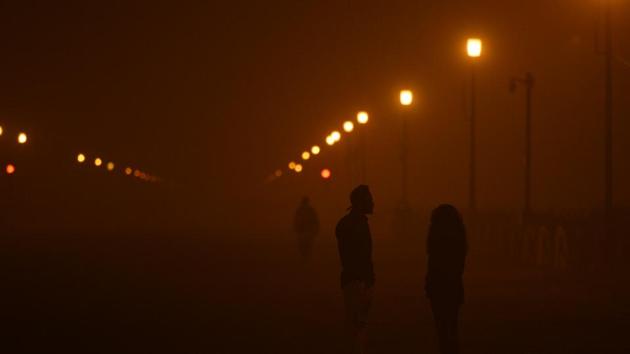Toxic Diwali in Delhi: Pollution levels peaked up to 26 times above normal
Pollution forecasting agency Safar had already warned that Delhi’s pollution level could peak between 11pm on Wednesday and 3am on Thursday, even if 50% of the total load of toxic firecrackers as compared to Diwali 2017 were brunt this time. The warning played out in reality.
With a clear sky and few vehicles on the road, Delhi was enjoying a rare pleasant day in the middle of a busy week. But Wednesday’s euphoria lasted till only 8pm, after which Delhiites started bursting firecrackers. By midnight, the entire city was engulfed by a thick smoke laced with chemicals and toxins.

Despite a court ban on firecrackers, this year’s Diwali night turned out to be more polluted than last year.
By 1am on Thursday, pollution levels had peaked up to 26 times above the safe standards.
Safar, the Union government’s pollution forecasting agency, had already warned that Delhi’s pollution level could peak between 11pm on Wednesday and 3am on Thursday, even if 50% of the total load of toxic firecrackers as compared to Diwali 2017 were brunt this time. The warning played out in reality.
The data available with the Delhi Pollution Control Committee (DPCC) showed that the average concentration of PM2.5 started shooting up sharply from 9pm on Wednesday. The celebrations started around 8pm. “By 1 am, the average concentration of PM2.5 – the more harmful particles – had shot up to a peak of 1560µg/m3. This is nearly 26 times above the daily safe standards,” said a senior official from Delhi government’s environment department.
Other pollutants such as PM10, nitrogen dioxide and sulphur dioxide also shot up during these four crucial hours. PM10 levels shot up to a peak of 1859µg/m3 around 1am which was 18 times higher than safe standards. Similarly the levels of NO2 and SO2 also crossed their daily limits of 80µg/m3 around 11am when celebrations were at their peak.
Role of crackers
While on one hand, only a handful of vehicles were seen on the road, forecasting agencies said that contribution from stubble burning regions was also less – around 10%.
“Wednesday’s pollution primarily came from firecrackers and hence it was the PM2.5 that shot up alarmingly. Had the cause for the pollution spike been natural dust or vehicles, then PM10 levels would have also shot up,” said a DPCC scientist.
The contribution of stubble burning in overall PM2.5 concentration during Diwali this year was estimated to be 10% by Indian Institute of Tropical Meteorology in Pune. Safar said that the contribution of PM2.5 in PM10 increased from 50% to 70% on Diwali night mainly because of emissions from crackers.
Worst-hit areas
Locations such as Jahangirpuri, Ashok Vihar, Nehru Nagar, Wazirpur, Anand Vihar, Punjabi Bagh and RK Puram were some of the most polluted spots.
In Ashok Vihar, PM2.5 levels shot up to 1250µg/m3 while Karni Singh Shooting Range near Tughlaqabad registered the maximum spike in SO2 levels. NO2 levels shot up the maximum in Punjabi Bagh and were recorded to be 142µg/m3 – almost twice the safe standards. PM10 levels were also found to be the maximum at Ashok Vihar where it had shot up to 1494µg/m3.
Dip in temperature: The nail in the coffin
Delhi encountered its coldest night of the season so far which further compounded the problem, experts said. The plummeting temperature triggered an inversion and the pollutants got trapped.
“While the temperature near the surface dropped to around 10-11 degrees Celsius, the temperature at a height of 500m and above ranged between 19-20 degrees Celsius. This trapped the pollutants as there was an inversion of temperature and they could not disperse,” said a senior official.
The wind speed had also dropped to below 10 km. To disperse the pollutants Delhi needs a minimum wind speed of 10km/hr and a ventilation index of 6,000m. On Thursday however the ventilation index had dropped to around 3,000sqm/sec.



